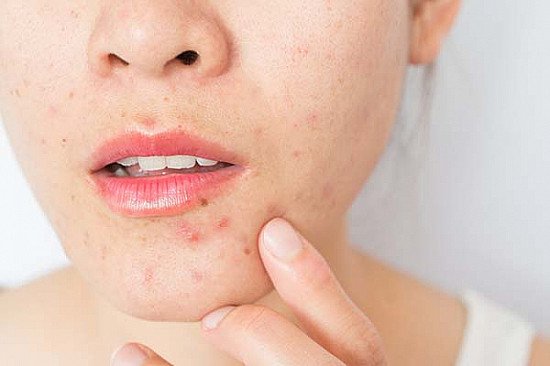Understanding Perioral Dermatitis: Symptoms, Causes, and Treatment
If you’re grappling with flaky red rashes and inflamed bumps around your mouth, it might be more than typical winter skin or acne. These symptoms could indicate a skin condition known as perioral dermatitis.
What is Perioral Dermatitis?
Perioral dermatitis, also referred to as periorificial dermatitis, is a prevalent skin disorder affecting the areas around the mouth, nose, and eyes. Unlike other skin conditions such as acne, rosacea, or eczema, perioral dermatitis has its own distinct characteristics.
Symptoms of Perioral Dermatitis
Individuals with perioral dermatitis typically exhibit:
- Clusters of small red bumps
- Dry red rashes
- Burning or itching sensations
While the condition mainly affects the area around the mouth, it can also be seen on the chin, around the nose and eyes, and occasionally on the ears, neck, and scalp. In children, it may present as small, firm, yellow or brown bumps.
Causes and Risk Factors
The precise cause of perioral dermatitis remains unknown. However, several factors seem to contribute to its development:
- Skin Irritants: Substances that break down the top layer of your skin
- History of Eczema: This can interfere with the skin’s barrier function
- Use of Steroid Medications: More common in individuals using topical, oral, or inhaled steroids
Who’s at Risk?
Perioral dermatitis can affect anyone, regardless of age, gender, or ethnicity. However, it’s more frequently observed in women aged 16 to 45. Additional risk factors include:
- Fluoride toothpaste
- Heavy skin moisturizers and cosmetics
- Hormonal fluctuations
- Presence of certain skin microorganisms
Note: Perioral dermatitis is non-contagious.
Treatment Options for Perioral Dermatitis
Treating perioral dermatitis may involve both over-the-counter and prescription solutions.
Initial Steps
- Eliminate Irritating Products: Begin by discontinuing the use of heavy or irritating cosmetic products.
- Avoid Steroid Creams: Although steroid creams might initially improve the rash, they often lead to a flare-up when discontinued.
Over-the-Counter Treatments
To alleviate perioral dermatitis effectively, adopt a minimalistic skin care routine. Here are some products you might consider:
- Gentle, fragrance-free face wash
- Moisturizers without occlusive properties
- Over-the-counter treatments such as:
- Azelaic acid gel
- Sulfur-based topical products
When to See a Doctor
If your condition does not improve with over-the-counter methods, it’s advisable to consult a dermatologist. They may prescribe:
- Topical Antibiotics: Such as clindamycin, erythromycin, or metronidazole
- Non-steroidal anti-inflammatory treatments
- Oral Antibiotics: Including doxycycline or minocycline
Preventing Perioral Dermatitis
Prevention is key. Here are some tips to mitigate the risk of developing perioral dermatitis:
- Avoid Harsh Products: Stick to gentle skin care items.
- Limit Steroid Use: If necessary, discuss options with your healthcare provider.
- Introduce Products Gradually: Try new products one at a time to monitor for reactions.
Consult the Experts
To ensure you’re using the right skin care products, consider scheduling an evaluation with a board-certified dermatologist.
For more information on skin conditions, visit resources like Mayo Clinic and DermNet to further educate yourself on skin health. By understanding perioral dermatitis, you can take effective steps towards treatment and prevention, leading to healthier skin.


